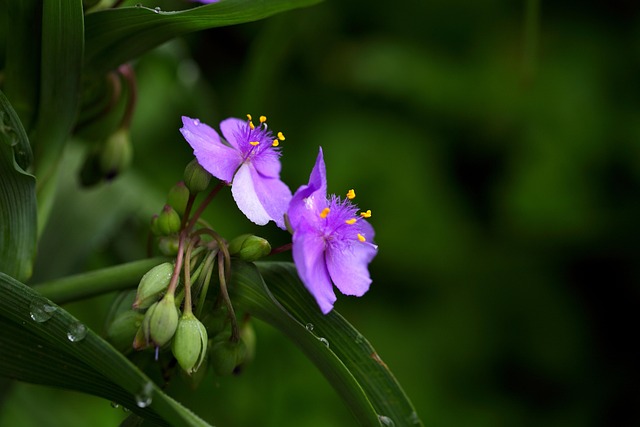Floral Origami: The Blooming Art of Paper Gardens
Imagine a lush garden bursting with vibrant blooms, each petal perfectly formed, each leaf delicately veined. Now, picture this horticultural haven crafted entirely from paper. Welcome to the enchanting world of floral origami, where the ancient Japanese art of paper folding meets botanical beauty. This innovative trend is captivating home decor enthusiasts and gardening aficionados alike, offering a fresh, sustainable approach to bringing nature indoors.

In the 1950s, origami master Akira Yoshizawa revolutionized the craft by introducing wet-folding techniques, allowing for more organic, rounded forms. This innovation paved the way for increasingly realistic floral creations. As the art form spread globally, it found particular resonance with gardening enthusiasts who sought ways to bring permanent blooms into their homes.
The Technique: Folding Petals and Stems
Creating a floral origami masterpiece requires patience, precision, and a deep understanding of both paper properties and botanical structures. Artists begin with carefully selected papers, often choosing those with subtle color gradients or textures that mimic natural petal variations. The process typically starts with a base fold that determines the overall structure of the flower.
Petals are formed through a series of intricate folds, often involving curved creases and subtle shaping to achieve a lifelike appearance. Stems and leaves require their own specialized techniques, with artists often incorporating wire or additional paper layers for stability and realism. Advanced practitioners may use multiple sheets of paper for a single bloom, allowing for complex petal arrangements and true-to-life color variations.
Beyond Decoration: The Therapeutic Benefits
While the aesthetic appeal of floral origami is undeniable, its benefits extend far beyond visual pleasure. The practice has gained recognition for its therapeutic properties, offering a mindful, meditative activity that reduces stress and enhances focus. Many enthusiasts report that the process of creating paper flowers provides a sense of accomplishment and connection to nature, particularly beneficial for those living in urban environments with limited access to green spaces.
Horticultural therapists have begun incorporating floral origami into their programs, noting its ability to improve fine motor skills and cognitive function in patients recovering from strokes or dealing with arthritis. The adaptability of the craft also makes it accessible to a wide range of abilities, allowing individuals to participate in gardening-like activities regardless of physical limitations or climate constraints.
Sustainable Decor: Evergreen and Ever-Changing
In an era of increasing environmental awareness, floral origami offers a sustainable alternative to cut flowers or artificial plants. These paper creations require no water, pesticides, or ongoing care, making them an eco-friendly choice for home decor. Moreover, they provide a long-lasting display that can be easily refreshed or changed to suit seasonal themes or personal preferences.
Interior designers have embraced this trend, incorporating floral origami into their schemes as statement pieces or subtle accents. From dramatic wall installations to delicate table centerpieces, these paper gardens add texture, color, and a touch of whimsy to any space. The versatility of the medium allows for endless customization, enabling homeowners to create bespoke botanical displays that perfectly complement their decor style.
DIY Delight: Cultivating Your Own Paper Garden
The rise of floral origami has sparked a surge in DIY enthusiasm, with crafters of all skill levels eager to try their hand at creating paper blooms. Online tutorials and workshops have proliferated, offering step-by-step guidance for everything from simple daisies to complex orchids. This accessibility has democratized the art form, allowing anyone with an interest to start their own paper garden.
Beginners often start with modular flowers, which use multiple identical pieces to form a single bloom. These projects offer a gentler learning curve while still producing impressive results. As skills develop, enthusiasts can progress to more challenging single-sheet designs that require advanced folding techniques and a keen eye for shaping and detail.
The Future of Floral Origami in Home and Garden Design
As the popularity of floral origami continues to grow, we’re seeing exciting innovations in its application to home and garden design. Artists are experimenting with scale, creating oversized blooms that serve as dramatic focal points in both indoor and outdoor spaces. Others are combining origami techniques with other crafts, such as quilling or paper cutting, to produce hybrid art forms that push the boundaries of paper manipulation.
In the realm of garden design, floral origami is finding its way into unexpected places. Paper sculptures are being used as weather-resistant garden markers, whimsical additions to children’s play areas, and even as models for planning complex planting schemes. Some landscape architects are drawing inspiration from origami forms to create folded metal or concrete structures that echo the elegance of paper flowers on a grand scale.
The intersection of technology and craft is also yielding intriguing developments. 3D printing enthusiasts are adapting floral origami designs to create durable, customizable garden ornaments. Meanwhile, augmented reality apps are being developed to help gardeners visualize how paper flower installations might look in their spaces before committing to a project.
As we look to the future, floral origami stands poised to bloom even further, offering a unique blend of traditional craft, modern design, and sustainable living. Whether adorning a minimalist apartment or complementing a lush garden, these paper creations remind us of nature’s enduring beauty and our own capacity for creativity. In cultivating our paper gardens, we find not just art, but a new way of connecting with the natural world around us.




